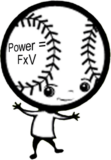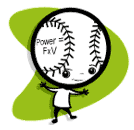The 411 on the 12-6 pitch
At least once a week, I receive a call from a coach or parent asking for guidance about the curveball. This is without a doubt the most controversial of pitches in that it is blamed for the increasing number of injuries to the elbow. Consequently, many parents have decided to have their sons wait to throw this pitch until they are older. Is the curveball harmful to the arm? This is the question to which everyone wants an answer but…is that really the question we should be asking?
What we know about the curveball:
- The research shows that the forces of the curveball are not greater than that of a fastball.
- It also shows a pattern among pro and college pitchers who suffered serious elbow problems: fairly large numbers threw a curveball before age 14.
- The wrist and forearm action is different from the fastball.
- The delivery of the curveball is slightly different than that of the fastball.
What we don’t know:
- Research cannot determine with certainly about what is actually going on in the more underlying structures of the arm. So while we know there is no real “kinetic” (force) difference, we don’t know the possible strain on deeper tissues such as ligaments.
- Even though many pitchers who threw the pitch at an early age developed problems, we don’t know if the curveball is at fault, or if other factors were involved.
Since it appears that every pitcher will eventually throw a curveball, it seems that whether or not we call it “harmful” may be irrelevant. What is relevant is taking control over those factors that can make a difference when it comes to the issues for which the pitch is blamed. If a pitcher is “waiting” until a certain age to throw one, his waiting period should be productive and preparative in nature. If a pitcher is already throwing one, he needs to respect the pitch and be aware, precise, and thoughtful about its use, the way it’s thrown, and the effects it can have on the tissues if not prepared and strengthened properly. So the real question that we should be asking is “what are we overlooking that could be contributing to why the curveball seems to do such harm?”
Here’s my list of answers and solutions to that question:
- Change your thinking about this pitch.
- Can a pitch be bad in and of itself? Isn’t a pitch just a pitch? If there is a problem, is the pitch to blame? If we need to change something, shouldn’t we be putting emphasis on the things that we are in a position to change?
- Try a new perspective.
- This pitch is like a high-voltage power tool. It has requirements that you must respect before you use it. You can get great results if you use it, but it has physical and mechanical demands that cannot be ignored.
- Learn everything you can about this pitch and its proper delivery.
- Get a good pitching coach.
- And remember, whenever a new skill is added it has to be practiced. Be careful of the volume of this pitch that you throw in the learning process.
- Start a curveball-specific strength program for your fingers, wrists, forearms and elbows.
- Whenever an athlete adds a new skill to his repertoire there will be muscles and tissues used that have conditioning requirements.
- Have your mechanics analyzed.
- Don’t interpret good movement on the ball as confirmation that the mechanics are correct.
- Pitchers should have their mechanics analyzed to be certain that they are not altering anything other than their elbow, forearm and wrist action when they throw a curveball. A variation in mechanics cannot only lead to an inconsistency problem with all the pitches, but is also incorrect and can contribute to undue stresses on the underlying tissues of the shoulder and arm complex.
- Be sure you have a bent elbow at release.
- The reason for this is kinesiology based. The wrist and forearm action of the curveball have more freedom and range of motion with a bent elbow.
- Restore the wrist, forearm, and elbow (and shoulder) after all pitching bouts.
- Pay attention to any unusual soreness and always have early intervention by a sport professional.
- If you are a pitching coach:
- Be careful of your language when teaching the curveball. The use of the terminology “get on top of the ball” can be misinterpreted by the pitcher creating incorrect shoulder mechanics. Be clear that getting “on top” is an action of the wrist, not the shoulder. Many youth pitchers make the mechanical error of involving their shoulder which can lead to elbow problems.
- Remember that our greatest weapon against injuries is honoring all the requirements of pitch counts and recovery days.
- Contact me if you need help with implementing any of the above recommendations.

